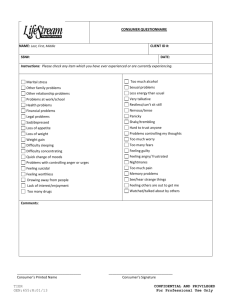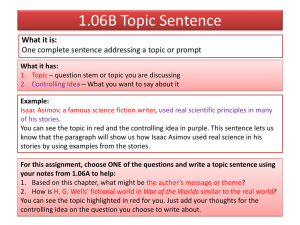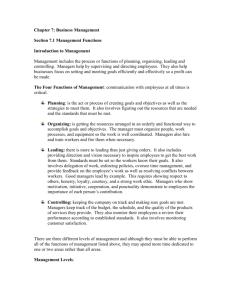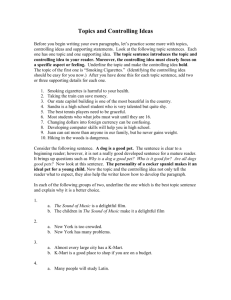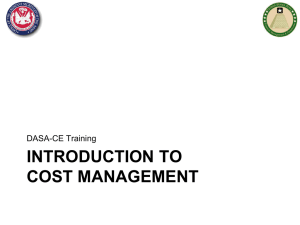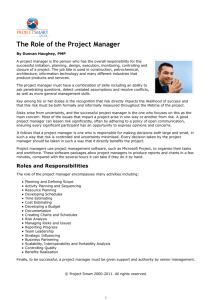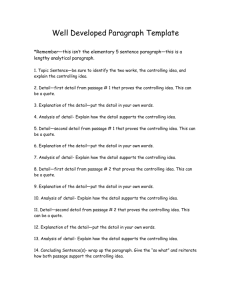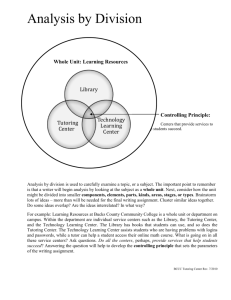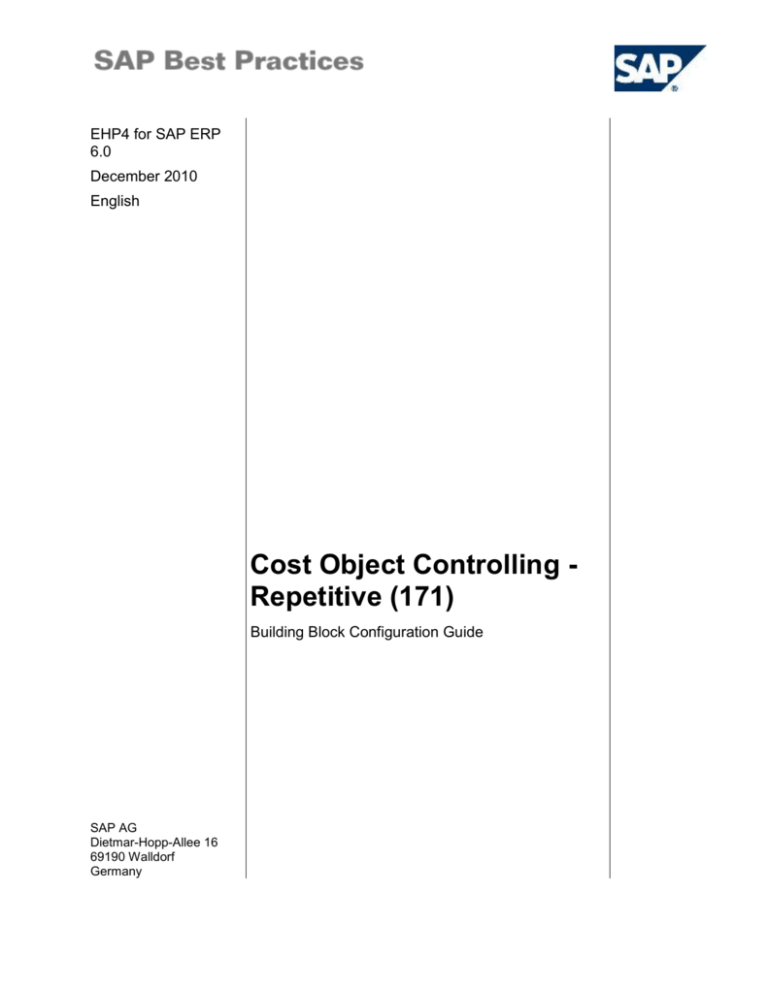
EHP4 for SAP ERP
6.0
December 2010
English
Cost Object Controlling Repetitive (171)
Building Block Configuration Guide
SAP AG
Dietmar-Hopp-Allee 16
69190 Walldorf
Germany
SAP Best Practices
Cost Object Controlling – Repetitive (171): Configuration Guide
Copyright
© 2010 SAP AG. All rights reserved.
No part of this publication may be reproduced or transmitted in any form or for any purpose without the
express permission of SAP AG. The information contained herein may be changed without prior notice.
Some software products marketed by SAP AG and its distributors contain proprietary software components
of other software vendors.
Microsoft, Windows, Excel, Outlook, and PowerPoint are registered trademarks of Microsoft Corporation.
IBM, DB2, DB2 Universal Database, System i, System i5, System p, System p5, System x, System z,
System z10, System z9, z10, z9, iSeries, pSeries, xSeries, zSeries, eServer, z/VM, z/OS, i5/OS, S/390,
OS/390, OS/400, AS/400, S/390 Parallel Enterprise Server, PowerVM, Power Architecture, POWER6+,
POWER6, POWER5+, POWER5, POWER, OpenPower, PowerPC, BatchPipes, BladeCenter, System
Storage, GPFS, HACMP, RETAIN, DB2 Connect, RACF, Redbooks, OS/2, Parallel Sysplex, MVS/ESA, AIX,
Intelligent Miner, WebSphere, Netfinity, Tivoli and Informix are trademarks or registered trademarks of IBM
Corporation.
Linux is the registered trademark of Linus Torvalds in the U.S. and other countries.
Adobe, the Adobe logo, Acrobat, PostScript, and Reader are either trademarks or registered trademarks of
Adobe Systems Incorporated in the United States and/or other countries.
Oracle is a registered trademark of Oracle Corporation.
UNIX, X/Open, OSF/1, and Motif are registered trademarks of the Open Group.
Citrix, ICA, Program Neighborhood, MetaFrame, WinFrame, VideoFrame, and MultiWin are trademarks or
registered trademarks of Citrix Systems, Inc.
HTML, XML, XHTML and W3C are trademarks or registered trademarks of W3C ®, World Wide Web
Consortium, Massachusetts Institute of Technology.
Java is a registered trademark of Sun Microsystems, Inc.
JavaScript is a registered trademark of Sun Microsystems, Inc., used under license for technology invented
and implemented by Netscape.
SAP, R/3, SAP NetWeaver, Duet, PartnerEdge, ByDesign, Clear Enterprise, SAP BusinessObjects Explorer,
and other SAP products and services mentioned herein as well as their respective logos are trademarks or
registered trademarks of SAP AG in Germany and other countries.
Business Objects and the Business Objects logo, BusinessObjects, Crystal Reports, Crystal Decisions, Web
Intelligence, Xcelsius, and other Business Objects products and services mentioned herein as well as their
respective logos are trademarks or registered trademarks of SAP France in the United States and in other
countries.
All other product and service names mentioned are the trademarks of their respective companies. Data
contained in this document serves informational purposes only. National product specifications may vary.
These materials are subject to change without notice. These materials are provided by SAP AG and its
affiliated companies ("SAP Group") for informational purposes only, without representation or warranty of
any kind, and SAP Group shall not be liable for errors or omissions with respect to the materials. The only
warranties for SAP Group products and services are those that are set forth in the express warranty
statements accompanying such products and services, if any. Nothing herein should be construed as
constituting an additional warranty.
© SAP AG
Page 2 of 24
SAP Best Practices
Cost Object Controlling – Repetitive (171): Configuration Guide
Icons
Icon
Meaning
Caution
Example
Note
Recommendation
Syntax
External Process
Business Process Alternative/Decision Choice
Typographic Conventions
Type Style
Description
Example text
Words or characters that appear on the screen. These include field
names, screen titles, pushbuttons as well as menu names, paths and
options.
Cross-references to other documentation.
Example text
Emphasized words or phrases in body text, titles of graphics and tables.
EXAMPLE TEXT
Names of elements in the system. These include report names,
program names, transaction codes, table names, and individual key
words of a programming language, when surrounded by body text, for
example, SELECT and INCLUDE.
Example text
Screen output. This includes file and directory names and their paths,
messages, source code, names of variables and parameters as well as
names of installation, upgrade and database tools.
EXAMPLE TEXT
Keys on the keyboard, for example, function keys (such as F2) or the
ENTER key.
Example text
Exact user entry. These are words or characters that you enter in the
system exactly as they appear in the documentation.
<Example text>
Variable user entry. Pointed brackets indicate that you replace these
words and characters with appropriate entries.
© SAP AG
Page 3 of 24
SAP Best Practices
Cost Object Controlling – Repetitive (171): Configuration Guide
Content
Cost Object Controlling – Repetitive................................................................................................ 5
1
Purpose................................................................................................................................. 5
2
Preparation ........................................................................................................................... 5
2.1
3
Prerequisites.................................................................................................. 5
Configuration ........................................................................................................................ 5
Cost Object Controlling – Repetitive ............................................................. 5
3.1
3.1.1
Creating Valuation Variants for Product Cost Collector ................................ 5
3.1.2
Creating Costing Variant for Preliminary Costing on PCC ............................ 7
3.1.3
Creating Costing Variant for Simultaneous Costing on PCC ........................ 8
3.1.4
Defining Goods Received Valuation for Order Delivery ................................ 9
3.1.5
Period-End Closing ....................................................................................... 9
3.1.5.1
Work in Process (WIP Calculation) ....................................................... 10
3.1.5.1.1 Creating Results Analysis Key............................................................... 10
3.1.5.1.2 Defining Results Analysis Version ......................................................... 10
3.1.5.1.3 Defining Valuation Method (Target Costs) ............................................ 11
3.1.5.1.4 Defining Line ID’s ................................................................................... 12
3.1.5.1.5 Defining Assignment for Results Analysis ............................................. 13
3.1.5.1.6 Defining Update for Results Analysis .................................................... 15
3.1.5.1.7 Defining Posting Rules for Setting Work in Process.............................. 16
3.1.5.1.8 Defining Results Analysis Version ......................................................... 16
3.1.5.2
Variances and Settlement ..................................................................... 17
3.1.5.2.1 Defining Default Variance Keys for Plants ............................................. 17
3.1.5.2.2 Defining Target Cost Versions ............................................................... 18
3.1.5.2.3 Creating Settlement Profile .................................................................... 18
3.1.6
Information System ..................................................................................... 21
3.1.6.1
3.1.7
Defining Summarization Hierarchy ........................................................ 21
CO-PC-OBJ Manufacturing Orders ............................................................. 23
3.1.7.1
Checking Order Types (YBMR), Checking Settlement Profile .............. 23
3.1.7.2
Defining Cost-Accounting-Relevant Default Values for Order Types and
Plants ..................................................................................................... 24
© SAP AG
Page 4 of 24
Cost Object Controlling – Repetitive (171): Configuration Guide
SAP Best Practices
Cost Object Controlling – Repetitive
1
Purpose
This configuration guide provides the information you need to set up the configuration of this
building block manually.
If you do not want to configure manually and prefer an automated installation process using the
SAP Best Practices Installation Assistant and other tools, refer to the SAP Best Practices Quick
Guide.
2
Preparation
2.1
Prerequisites
Before you start installing this building block, you must install prerequisite building blocks. For
more information, see the Building Block Prerequisite Matrix for Baseline. The matrix (an Excel
file) is linked on the solution's DVD Web site in the following location:
Content Library
3
Configuration
Cost Object Controlling – Repetitive
3.1
Cost object controlling calculates the costs that incur during a concrete manufacturing situation. It
consists of preliminary costing, simultaneous costing and period-end closing. Preliminary costing
calculates the target costs of the order. Simultaneous costing provides an overview over the
actual costs incurred on the order so far and compares them to the target costs. Period-end
closing deals with allocation of overhead costs, reconciliation between controlling and financial
accounting, variance calculation and settlement.
3.1.1
Creating Valuation Variants for Product Cost Collector
Use
The valuation variant controls various parameters regarding the valuation of input items for the
object for which costs are being determined.
Procedure
Carry out the following steps:
1. Access the activity using one of the following navigation options:
IMG Menu
© SAP AG
Controlling Product Cost Controlling Cost Object
Contolling Product Cost by Period Product Cost
Collectors Check Valuation Variants for Product Cost
Collectors
Page 5 of 24
Cost Object Controlling – Repetitive (171): Configuration Guide
SAP Best Practices
Menú IMG
Controlling Contabilidad de costes de producto
Contabilidad de objetos de coste Controlling periódico del
producto Colectores de coste del producto Verificar
variantes de valoración p.colector de costes producto
Transaction Code
OPN2
2. Choose New Entries and enter header data. Then for each new entry choose Details and
enter remaining data.
Overview of data records:
Valuation Variant
Name
Y06
BP: Prod. Order: Planned
YRM
BP: REM Order: Actual
Material Val.
Prio
Y06
1
YRM
1
Strategy sequence
7 Valuation price acc. to price control in mat.
Master
incl add co
7 Valuation price acc. to price control in mat. master
Activity Types / Processes
Prio
Strategy sequence
P/A
Version
Y06
1
2 Plan price as average of all fiscal year periods
0
YRM
1
1 Plan price for the period
0
Subcontracting: quotation in purchasing
Y06
1
3 Net Quotation Price
Arrangement
Quot. in purchasing : Actual Quota
YRM
2
3 Net Quotation Price
Arrangement
Quot. in purchasing : Actual Quota
External processing
Prio
Strategy sequence
Y06
1
1 Price from Operation
Y06
2
3 Net quotation price
YRM
1
1 Price from Operation
YRM
2
7 Net purchase order price
Overhead
Materials
© SAP AG
Components
OH on subc.
Mat.
Page 6 of 24
Cost Object Controlling – Repetitive (171): Configuration Guide
SAP Best Practices
Y06
YRM
3.1.2
YPP-PC BP Costing Sheet
Production
Not set
YPP-PC BP Costing Sheet
Production
Not set
Creating Costing Variant for Preliminary Costing on PCC
Use
The osting variant controls various parameters when costs for a cost object or a material are
being determined, such as the costing type or the valuation variant used.
Procedure
Carry out the following steps:
1. Access the activity using one of the following navigation options:
IMG Menu
Controlling Product Cost Controlling Cost Object
Controlling Product Cost by Period Product Cost
Collectors Check Costing Variants for Product Cost
Collectors
Menú IMG
Controlling Contabilidad de costes de producto
Contabilidad de objetos de coste Controlling periódico del
producto Colectores de coste del producto Verificar
variantes CC para colector de costes del producto
Transaction Code
OKKN
2. On the Choose Activity screen, choose Costing Variants to Determine Activity Quantities.
3. On the Change View “Costing Variants”: Overview screen, choose New Entries and enter
header data. Then for each new entry choose Details and enter the remaining data.
Overview of data records:
Valuation Variant
Name
YPRM
BP: Preliminary PCC
Control
YPRM
Costing Type
Val. Variant
Date Control
Qty. Str. Ctrl
Transf.
Ctrl
19
Y06
PC01
PC01
PC02
Quantity Structure
YPRM
Pass on Lotsize
Ignore PCE
TrCtrl can be chd
Transf. act.
SCE
No
not set
Set
not set
Additive Costs
YPRM
© SAP AG
1 Ignore Additive Costs
Page 7 of 24
Cost Object Controlling – Repetitive (171): Configuration Guide
SAP Best Practices
YPRM
Include Additive Costs with Stock Transfers: not set
Update
YPRM
Saving allowed
Save Itemization
Save Error Log
Defaults
changes
set
set
Set
set
Misc.
YPRM
3.1.3
3 Log Messages But Do Not Save Them, Mail Inactive
Creating Costing Variant for Simultaneous Costing on
PCC
Use
The costing variant controls various parameters when costs for a cost object or a material are
being determined, such as the costing type or the valuation variant used.
Procedure
Carry out the following steps:
1. Access the activity using one of the following navigation options:
IMG Menu
Controlling Product Cost Controlling Cost Object
Controlling Product Cost by Period Product Cost
Collectors Check Costing Variants for Product Cost
Collectors
Menú IMG
Controlling Contabilidad de costes de producto
Contabilidad de objetos de coste Controlling periódico del
producto Colectores de coste del producto Verificar
variantes CC para colector de costes del prducto
Transaction Code
OPL1
2. On the Choose Activity screen, choose Costing Variants for Valuation of Internal Activities.
3. On the Change View “Costing Variants”: Overview screen, choose New Entries and enter
header data. Then for each new entry choose Details and enter remaining data.
4. Overview of data records:
Costing Variant
Name
YSRM
Product Cost Collector
Control
YSRM
© SAP AG
Costing Type
Valuation variant
07
YRM
Page 8 of 24
Cost Object Controlling – Repetitive (171): Configuration Guide
SAP Best Practices
Update
Itemization
YSRM
Set
Misc.
Costing Variant
Gen. costs activity
Network component
YSRM
3.1.4
Defining Goods Received Valuation for Order Delivery
Use
This activity determines how the material that is transferred to stock from a production order is
valuated.
Procedure
Carry out the following steps:
1. Access the activity using one of the following navigation options:
IMG Menu
Controlling Product Cost Controlling Cost Object
Controlling Product Cost by Order Define Goods
Received Valuation for Order Delivery
Menú IMG
Controlling Contabilidad de costes de producto
Contabilidad de objetos de coste Controlling del producto
por órdenes Fijar valoración de entrada para entrega de
órdenes
Transaction Code
SPRO
2. Make the following entries:
Valuation Area
1000
1100
Valuation Variant
Y01
Y01
3.1.5
Period-End Closing
Period-end closing consists of several steps. Overhead surcharge allocates overhead costs to the
order as specified in the costing sheet assigned to the order. WIP calculation reconciliates
controlling and financial accounting by valuating and then capitalizing goods that have been
produced but not transferred to stock yet. Variance calculation determines variances between the
actual costs incurred on the Product Cost Collector and the standard costs of the material
produced. Settlement transfer the difference between the debit and credit of the Product Cost
Collector to FI.The total variance can be transferred to profitability segments in CO-PA.
© SAP AG
Page 9 of 24
Cost Object Controlling – Repetitive (171): Configuration Guide
SAP Best Practices
3.1.5.1
Work in Process (WIP Calculation)
WIP calculation is used to valuate order inventories in period-end closing. The computed order
inventories are then transferred to financial accounting, whereby a reconciliation between
controlling and financial accounting is achieved.
3.1.5.1.1
Creating Results Analysis Key
Use
The RA key is a key field in most customizing tables for results analysis. It is used to differentiate
different types of results analysis / WIP calculation and to assign them to the orders.
Procedure
Carry out the following steps:
1. Access the activity using one of the following navigation options:
IMG Menu
Controlling Product Cost Controlling Cost Object
Controlling Product Cost by Period Period-End Closing
Work in Process Define Results Analysis Key
Menú IMG
Controlling Controlling de costes del producto
Contabilidad de objetos de coste Controlling del producto
por órdenes Cierre de periodo Trabajo en curso
definir claves de periodificación
Transaction Code
OKG 1
2. Choose New Entries and provide data.
Overview of data records
RA Key
Text
YBMF03
BP WIP target costs
3.1.5.1.2
Defining Results Analysis Version
Use
The RA version controls various settings related to WIP calculation.
Procedure
Carry out the following steps:
1. Access the activity using one of the following navigation options:
© SAP AG
Page 10 of 24
Cost Object Controlling – Repetitive (171): Configuration Guide
SAP Best Practices
IMG Menu
Controlling Product Cost Controlling Cost Object
Controlling Product Cost by Period Period-End Closing
Work in Process Define Results Analysis Versions
Menú IMG
Controlling Controlling de costes del producto
Contabilidad de objetos de coste Controlling del producto
por órdenes Cierre de periodo Trabajo en curso
definir versiones de periodificación
Transaction Code
OKG9
2. Choose New Entries and provide general data. Choose Details and provide remaining data.
The indicator for Transfer to Financial Accounting has to be set, but first in step
3.1.5.1.8 The reason is that for step Define posting rules for settling WIP this
indicator must not be set.
Overview of data records:
CoArea
RA Version
Text
1000
0
WIP/Results Analysis (Standard)
Actual Results Analysis / WIP Calculation
Version relevant to settlement
X
Transfer to Financial Accounting
Multiple Valuation
Legal Valuation
Extended control
Assignment/RA Key
X
Update/RA Key
X
Update Plan Values
X
Status control
A
Cutoff period for actual
1.2009
Actual RA
X
Planned Results Analysis
Cutoff period for planned RA
0
Cost Elements
Technical RA cost Element
3.1.5.1.3
931000
Defining Valuation Method (Target Costs)
Use
The valuation method controls various parameters related to WIP calculation.
© SAP AG
Page 11 of 24
Cost Object Controlling – Repetitive (171): Configuration Guide
SAP Best Practices
Prerequisites
RA Version, RA Key
Procedure
Carry out the following steps:
1. Access the activity using one of the following navigation options:
IMG Menu
Controlling Product Cost Controlling Cost Object
Controlling Product Cost by Period Period End Closing
Work in Process Define Valuation Method (Target
Costs)
Menú IMG
Controlling Controlling de costes del producto
Contabilidad de objetos de coste Controlling del producto
por órdenes Cierre de periodo Trabajo en curso
definir métodos de valoración (costos reales)
Transaction Code
OKGD
2. Choose New Entries, then choose WIP method.
3. On the New Creation WIP Valuation screen, enter remaining data and choose Enter.
Data records to be set for each new entry:
WIP Method
COAr
RA-Version RA key
Target Costs
1000
0
YBMF03
4. Create a New Entry item as in the table below:
Co
Area
RA
RA
Version Key
Status
Status
Nr
RA Type
1000
0
YBMF03 PREL
1
WIP Calculation on Basis of Target
Costs
1000
0
YBMF03
REL
2
WIP Calculation on Basis of Target
Costs
1000
0
YBMF03
DLV
3
Cancel Data of WIP Calculation and
Results Ana
1000
0
YBMF03 TECO
4
Cancel Data of WIP Calculation and
Results Ana
3.1.5.1.4
Defining Line ID’s
Use
Cost elements are grouped to line ID’s in WIP calculation. Further processing then is defined
separately for each line ID.
© SAP AG
Page 12 of 24
Cost Object Controlling – Repetitive (171): Configuration Guide
SAP Best Practices
Procedure
Carry out the following steps:
1. Access the activity using one of the following navigation options:
IMG Menu
Controlling Product Cost Controlling Cost Object
Controlling Product Cost by Period Period-End Closing
Work in Process Define Line IDs
Menú IMG
Controlling Controlling de costes del producto
Contabilidad de objetos de coste Controlling del producto
por órdenes Cierre de periodo Trabajo en curso
definir identificaciones de línea.
Transaction Code
SPRO
2. Choose New Entries and provide data.
Overview of data records:
CoArea
Line ID
Name
1000
LBR
Labor Costs
1000
MAT
Material Costs
1000
OVH
Overhead Costs
You must not create Line IDs for settlement and revenues.
3.1.5.1.5
Defining Assignment for Results Analysis
Use
Cost elements and cost element intervals are assigned to line ID’s.
Prerequisites
Cost elements, RA Version, Line IDs
Procedure
Carry out the following steps:
1. Access the activity using one of the following navigation options:
IMG Menu
© SAP AG
Controlling Product Cost Controlling Cost Object
Controlling Product Cost by Period Period-End Closing
Work in Process Define assignment
Page 13 of 24
Cost Object Controlling – Repetitive (171): Configuration Guide
SAP Best Practices
Menú IMG
Controlling Controlling de costes del producto
Contabilidad de objetos de coste Controlling del producto
por órdenes Cierre de periodo Trabajo en curso
Definir Asignación
Transaction Code
OKGB
2. Choose New Entries and provide the following data:
Overview of data records:
CoArea
1000
1000
1000
1000
1000
1000
RA Version
0
0
0
0
0
RA Key
YBMF03
YBMF03
YBMF03
YBMF03
YBMF03
YBMF03
YBMF03
Masked CoEl
6011000000
6091000000
6092500000
6330000000
6021000000
6021000001
6021000002
Origin
++++
++++
++++
++++
++++
++++
++++
D/C ind.
+
+
+
+
+
+
+
Vble/Fix ind.
+
+
+
+
+
+
+
Acc ind.
++
++
++
++
++
++
++
Val-from Per.
001.2009
001.2009
001.2009
001.2009
001.2009
001.2009
001.2009
RecToCap
MAT
MAT
MAT
MAT
MAT
MAT
MAT
CoArea
1000
1000
1000
1000
1000
1000
1000
RA Version
0
0
0
0
0
RA Key
YBMF03
YBMF03
YBMF03
YBMF03
YBMF03
YBMF03
YBMF03
Masked CoEl
6032000001
6130000001
6042000000
6062000000
6080000000
6130000001
0000941+++
Origin
++++
++++
++++
++++
++++
++++
++++
0
1000
0
Masked CC
Masked AT
Bus Proc.
App. Reason
0
0
Masked CC
++++++++++
Masked AT
++++++
Bus Proc.
D/C ind.
+
+
+
+
+
+
+
Vble/Fix ind.
+
+
+
+
+
+
+
Acc ind.
++
++
++
++
++
++
++
Val-from Per.
001.2009
001.2009
001.2009
001.2009
001.2009
001.2009
001.2009
RecToCap
MAT
MAT
MAT
MAT
MAT
MAT
OVH
App. Reason
© SAP AG
Page 14 of 24
Cost Object Controlling – Repetitive (171): Configuration Guide
SAP Best Practices
CoArea
1000
1000
RA Version
0
0
RA Key
YBMF03
YBMF03
Masked CoEl
7110000000
Origin
++++
1000
1000
1000
1000
1000
0
0
0
0
YBMF03
YBMF03
YBMF03
YBMF03
YBMF03
7130000000
7760000000
0000943010
0000943020
0000943030
0000943110
++++
++++
++++
++++
++++
++++
Masked CC
++++++++++
++++++++++
++++++++++
++++++++++
Masked AT
++++++
++++++
++++++
++++++
0
Bus Proc.
D/C ind.
+
+
+
+
+
+
+
Vble/Fix ind.
+
+
+
+
+
+
+
Acc ind.
++
++
++
++
++
++
++
Val-from Per.
001.2009
001.2009
001.2009
001.2009
001.2009
001.2009
001.2009
RecToCap
MAT
MAT
MAT
OVH
OVH
LBR
LBR
App. Reason
3.1.5.1.6
Defining Update for Results Analysis
Use
For each line ID a cost element, under which RA is performed, is assigned.
Prerequisites
RA Versions, Cost Elements, Line IDs
Procedure
1. Access the activity using one of the following navigation options:
IMG Menu
Controlling Product Cost Controlling Cost Object
Controlling Product Cost by Period Period-End Closing
Work in Process Define Update
Menú IMG
Controlling Controlling de costes del producto
Contabilidad de objetos de coste Controlling del producto
por órdenes Cierre de periodo Trabajo en curso
Definir actualización
Transaction Code
OKGA
2. Choose New Entries and enter data.
Overview of data records:
Co
Area
Vers
RA Key
LID
Cat
1000
0
YBMF03
LBR
K
© SAP AG
Creation
WIP
Reserves
931130
931140
UM
Page 15 of 24
Cost Object Controlling – Repetitive (171): Configuration Guide
SAP Best Practices
1000
0
YBMF03
MAT
K
931110
931120
1000
0
YBMF03
OVH
K
931150
931160
3.1.5.1.7
Defining Posting Rules for Setting Work in Process
Use
For each RA Category a P/L- and a balance sheet account is defined where the calculated WIP is
posted to when WIP is transferred to Financial Accounting,
Procedure
Carry out the following steps:
1. Access the activity using one of the following navigation options:
Transaction Code
OKG8
IMG Menu
Controlling Product Cost Controlling Cost Object Controlling
Product Cost by Period Period-End Closing Work in
Process Define Posting Rules for Settling WIP
Menú IMG
Controlling Controlling de costes del producto Contabilidad
de objetos de coste Controlling del producto por órdenes
Cierre de periodo Trabajo en curso definir reglas de
conabiliz.p.liquidacion del trabajo en curso
2. Choose New entries and enter the following values:
COArea
Company
Code
RA
version
RA
category
Rec
number
1000
1000
0
WIPR
0
3.1.5.1.8
P/L Acct
BalSheetAcct
7590000
007
2310000000
Defining Results Analysis Version
Use
The RA Version has already been created in the steps before.
Now the transfer to FI will be activated.
Procedure
Carry out the following steps:
2. Access the activity using one of the following navigation options:
© SAP AG
Page 16 of 24
Cost Object Controlling – Repetitive (171): Configuration Guide
SAP Best Practices
IMG Menu
Controlling Product Cost Controlling Cost Object
Controlling Product Cost by Order Period-End Closing
Work in Process Define Results Analysis Versions
Menú IMG
Controlling Controlling de costes del producto Contabilidad
de objetos de coste Controlling del producto por órdenes
Cierre de periodo Trabajo en curso definir versiones de
periodificación
Transaction Code
OKG9
3. Select the following data and Choose Details.
CoArea
RA Version
Tcxt
1000
0
WIP/Results Analysis (Standard)
4. Enter X in the Active box for transfer to financial accounting.
Actual Results Analysis / WIP Calculation
Transfer to Financial Accounting
3.1.5.2
X
Variances and Settlement
Variance calculation determines differences between the actual costs incurred on a production
order and the standard costs of the material produced. Variances are calculated not at once, but
for different variance categories. The variances computed are then transferred to CO-PA.
3.1.5.2.1
Defining Default Variance Keys for Plants
Use
The Variance Key is part of the order header and controls variance calculation. The system
selects the value set by this step as default value when a material master is created. From the
material master the variance key then is transferred to the order when an order for the material is
created.
Procedure
Carry out the following steps:
1. Access the activity using one of the following navigation options:
IMG Menu
Controlling Product Cost Controlling Cost Object
Controlling Product Cost by Period Period End Closing
Variance Calculation Variance Calculation for Product Cost
Collectors Define Default Variance Keys for Plants
Menú IMG
Controlling Controlling de costes del producto Contabilidad
de objetos de coste Controlling del producto por órdenes
Cierre de periodo Determinacione de desviaciones definir
clave de desviación por centro
Transaction Code
OKVW
© SAP AG
Page 17 of 24
Cost Object Controlling – Repetitive (171): Configuration Guide
SAP Best Practices
2. Make the following entries:
Plant
Variance Key
1000
000001
3.1.5.2.2
Defining Target Cost Versions
Use
The target cost version controls various parameters related to calculation of target costs in
variance calculation. In variance calculation, target costs are needed as a comparison to the
actual costs incurred.
Procedure
Carry out the following steps:
1. Access the activity using one of the following navigation options:
IMG Menu
Controlling Product Cost Controlling Cost Object
Controlling Product Cost by Period Period End Closing
Variance Calculation Variance Calculation for Product Cost
Collectors Define Target Cost Versions
Menú IMG
Controlling Controlling de costes del producto Contabilidad
de objetos de coste Controlling del producto por órdenes
Cierre de periodo Determinacione de desviaciones Fijar
versiones teóricas
Transaction Code
OKV6
2. Choose New entries and enter the following values or copy from default settings of CoArea
0001 to 1000:
CoArea
TgtCostVsn
Text
Variance
Variant
Control
Cost
Target Cost
1000
0
Target Costs for
Total Variances
001
Actual
Costs
Current Std
cost Est
1000
1
Target costs for
production
variances
001
Actual
Costs
Plan Costs /
Preliminary
Cost Estimate
1000
2
Target costs for
planning variances
001
Plan
Costs
Current Std
cost Est
3.1.5.2.3
Creating Settlement Profile
Use
The settlement profile controls various parameters related to settlement.
Prerequisites
Allocation Structure
© SAP AG
Page 18 of 24
Cost Object Controlling – Repetitive (171): Configuration Guide
SAP Best Practices
Procedure
Carry out the following steps:
1. Access the activity using one of the following navigation options:
IMG Menu
Controlling Product Cost Controlling Cost Object
Controlling Product Cost by Period Period-End Closing
Settlement Create Settlement Profile
Menú IMG
Controlling Controlling de costes del producto Contabilidad
de objetos de coste Controlling del producto por órdenes
Cierre de periodo crear perfil de liquidación.
Transaction Code
SPRO
2. Choose New Entries and enter header data.
3. For each new entry choose Details and enter remaining data.
Profile
Text
YBMF99
Rework - Via Notification
YBMF99
Actual costs/costs of sales
To be settled in full
X
Can be settled
Not for settlement
Default Values
Allocation Structure
Y9
Source Structure
PA Transfer Struct.
Default object Type
Indicators
100% Validation
X
%-Settlement
X
Equivalence No’s
X
Amount Settlement
Var. to co. bsd. PA
Valid receivers
G/L account
N
Cost center
O
Order
O
WBS Element
N
© SAP AG
Page 19 of 24
Cost Object Controlling – Repetitive (171): Configuration Guide
SAP Best Practices
Fixed asset
N
Material
N
Network
N
Profit. Segment
N
Sales order
N
Cost objects
N
Order item
O
Business proc.
N
Real est. object
N
Other parameters
Document type
SA
Max.no.dist.rls
3
Residence time
3
4. Save your entries.
5. Choose New Entries and enter header data.
6. For each new entry choose Details and enter remaining data.
Overview of data records:
Profile
Text
YBMFP1
BP: PP Valuated to COPA
YBMFP1
Actual costs/costs of sales
To be settled in full
X
Can be settled
Not for settlement
Default Values
Allocation Structure
YP
Source Structure
PA Transfer Struct.
Y1
Default object Type
Indicators
100% Validation
X
%-Settlement
X
© SAP AG
Page 20 of 24
Cost Object Controlling – Repetitive (171): Configuration Guide
SAP Best Practices
Equivalence No’s
X
Amount Settlement
Var. to co. bsd. PA
X
Valid receivers
G/L account
N
Cost center
N
Order
O
WBS Element
N
Fixed asset
N
Material
O
Network
N
Profit. Segment
O
Sales order
O
Cost objects
O
Order item
O
Business proc.
N
Real est. object
N
Other parameters
Document type
SA
Max.no.dist.rls
3
Residence time
3
7. Save your entries.
3.1.6
Information System
For cost object controlling, you can use standard reports for analyzing production variances, work
in progress (WIP) and line items on single orders.
3.1.6.1
Defining Summarization Hierarchy
Use
It is useful to have a summarization hierarchy of all production orders/product cost collectors so
that you can start your analysis at higher levels like e.g. plant, order type, material number. After
period-end closing, you start a data collection. During this run, the system collects data on the
levels of the summarization hierarchy you defined so that your reports can be executed more
quickly.
Procedure
Carry out the following steps:
© SAP AG
Page 21 of 24
Cost Object Controlling – Repetitive (171): Configuration Guide
SAP Best Practices
8. Access the activity using one of the following navigation options:
IMG Menu
Controlling Product Cost Controlling Information System
Cost object Controlling Settings for Summarized
Analysis/Order Selection Maintain Summarization
Hierarchies
Menú IMG
Controlling Controlling de costes del producto
Contabilidad de objetos de coste sistemas de información
contabilidad de objetos de coste Parametrizaciones para
análisis compacto / selección de orden Actualizar jerarquía
de integración
Transaction Code
KKR0
9. Choose New Entries and enter:
Hierarchy
Description
YBMF0001
Best Practice: Manufacturing Orders
10. Double click on Data Scope (object types) on the right-hand side of the screen.
11. Flag the objects you would like to summarize on the left-hand side of the screen:
Production orders
QM orders
product cost collectors
12. Enter priority 1 for the production order line. Do not enter a status.
13. Mark the line with the production orders and double-click on Data Scope (totals record tables)
on the left-hand side of the screen.
14. Flag the column no origin for the lines Variances/Results Analysis Data, Activity Quantities,
Primary Costs, Secondary Costs.
Do not flag the first column.
15. Mark the lines Variances/Results Analysis Data, Activity Quantities, Primary Costs,
Secondary Costs and double-klick Hierachy Levels on the left-hand side of the screen.
16. There is already an entry for the Controlling area. To enter the lower levels of the
Summarization Hierarchy, choose New Entries and enter the following information:
Hierarchy
Level
Hierarchy
Field
Name
Total
Offset
Lenght
YBMF0001
1
Kokrs
Controlling Area
4
0
4
YBMF0001
2
BUKRS
Company code
4
0
4
flag
YBMF0001
3
WERKS
Plant
4
0
4
flag
YBMF0001
4
AUART
Order type
4
0
4
flag
© SAP AG
Blank
Page 22 of 24
Cost Object Controlling – Repetitive (171): Configuration Guide
SAP Best Practices
Hierarchy
Level
Hierarchy
Field
Name
Total
Offset
Lenght
Blank
YBMF0001
5
MATNR
Material number
18
0
18
flag
YBMF0001
6
AUFNR
Order number
12
0
12
Flag
17. Save your entries.
3.1.7
CO-PC-OBJ Manufacturing Orders
In this section, order types are set up.
3.1.7.1
Checking Order Types (YBMR), Checking Settlement
Profile
Use
The order types contain various settings that are transferred to the order when an order of the
respective type is created, for example the settlement profile. The total variance can be
transfered to profitability segments in CO-PA during order settlement. Prerequisite is that the
indicator for variances is set.
Prerequisites
Settlement Profiles
Procedure
Carry out the following steps:
1. Access the activity using one of the following navigation options:
IMG Menu
Controlling Product Cost Controlling Cost Object
Controlling Product Cost by Period Product Cost
Collectors Check Order Types
Menú IMG
Controlling Contabilidad de objetos de costos Controlling
periodico del producto Colector de costes del porducto
Verificar clases de orden
Transaction Code
KOT2_PKOSA
2. Make the following entries:
Make a copy of type RM01 to YBMR
Assign the Settlement profile to the order type
Type
Name
Settlement prof.
YBMR
BP Product cost
collector
YBMFP1
3. Choose Assign/Change Intervals for assignment of the number range.
4. To assign the Order Type to the related Number Ranges Group perform the following steps:
© SAP AG
Page 23 of 24
Cost Object Controlling – Repetitive (171): Configuration Guide
SAP Best Practices
a. Mark the number range group by clicking in the checkbox
b. Choose the order type with ‘Select element F2’. (The color of the order type is changing
from black to blue.)
c.
Assign the order type to number range group with button
Order Type
Number Range group
Number Range Intervall
Investment
700000 – 799999
YBMR
3.1.7.2
(F5)
Defining Cost-Accounting-Relevant Default Values for
Order Types and Plants
Use
This activity configures various settings that are transferred to the order when an order of the
respective plant/type is created.
Prerequisites
Costing Variants, RA Keys
Procedure
Carry out the following steps:
1. Access the activity using one of the following navigation options:
IMG Menu
Controlling Product Cost Controlling Cost Object
Controlling Product Cost by Period Product Cost
Collectors Define Cost-Accounting-Relevant Default
Values for Order Types and Plants
Menú IMG
Controlling Controlling de costes del porducto
Contabilidad de objetos de costos Controlling periódico
del producto Colector de costos del producto
Actualiz.valores propuestos relevantes p.contabilidad
costes p/cl.orden/ce
Transaction Code
SPRO
2. Make the following entries:
Plant
Order
Type
Default
Rule
Prel./Vers. Simul.
Cstg
Costing
RA key
1000
YBMR
STR
YPRM
YBMF03
© SAP AG
YSRM
Page 24 of 24

